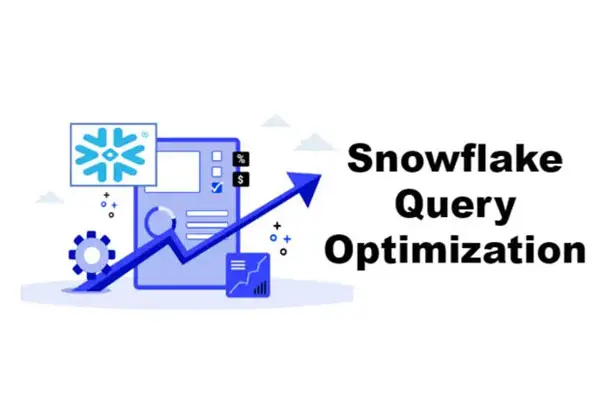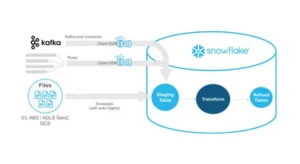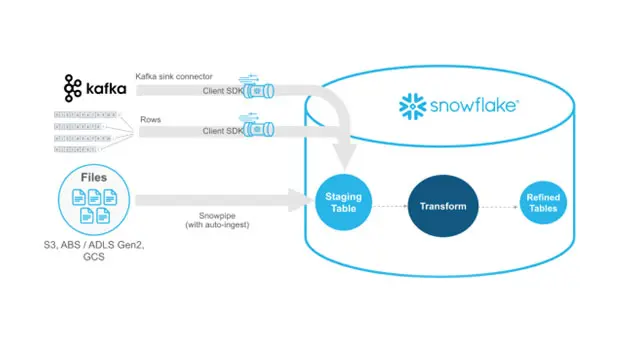
Enhancing Snowflake Query Performance with Clustering, Partitioning, and Materialized Views
Optimizing Snowflake Performance: Using Clustering, Partitioning, and Materialized Views for Efficient Queries
Snowflake has transformed how organizations manage data. Its distinctive architecture, integrating scalability and flexibility, renders it an optimal alternative for enterprises managing extensive datasets. Nonetheless, despite its advanced functions, performance bottlenecks may arise when searching extensive databases or executing complex joins. This article explores methods to surmount these issues using clustering, partitioning, and materialized views, therefore enhancing the speed and efficiency of your queries.
Understanding Query Performance Issues in Snowflake
As your data expands, the difficulties of querying it efficiently also increase. Envision yourself as a data analyst engaged with a fact table with billions of records. Executing queries to produce reports may require more time than anticipated, particularly when they entail complex joins or filters.
Here are some common problems:
- Querying extensive datasets devoid of logical structure, hence prolonging execution time.
- Complex connections need substantial processing resources.
- Suboptimal data trimming resulting in superfluous scanning of data blocks.
These bottlenecks impede inquiries and escalate computational expenses, which might become unmanageable if not addressed.
Partitioning Data in Snowflake
Partitioning is a fundamental method for structuring data into smaller, logical segments. In Snowflake, although physical partitioning is not accessible, its architecture enables the attainment of comparable outcomes using table design methodologies.
What is micro partitioning in Snowflake?
Snowflake automatically splits data into small, contiguous storage units known as micro-partitions. Each micro-partition includes 50–500 MB of uncompressed data. This automated partitioning requires no human participation, making it a painless user experience.
INSERT INTO my_table (column1, column2) VALUES (‘value1’, ‘value2’); |
In this case, when data is put into the table, Snowflake automatically separates it into micro-partitions without any user-defined partitioning logic.
Executing Partitioning in Snowflake
Let us consider an example to demonstrate the advantages of data partitioning. Consider a sales database with millions of entries systematically partitioned by year and month, facilitating the rapid retrieval of data from certain months or years. Consequently, by segmenting the data in this manner, requests are handled more effectively, yielding more accurate responses.
SELECT store_location, SUM(sales_amount) FROM sales WHERE transaction_date BETWEEN ‘2023-01-01’ AND ‘2023-12-31’ AND product_category = ‘Electronics’ GROUP BY store_location |
Assume the sales table is partitioned by the transaction_date and store_location columns. The warehouse can eliminate partitions just to examine those that have data inside a certain time window or a designated storage location. This method substantially decreases the amount of records to be scanned, leading to expedited query times.
Common Challenges and Solutions
While Snowflake’s micro-partitioning has many advantages, users may experience certain issues. Here are some frequent difficulties and their remedies.
Challenge: High Clustering Depth
Solution: Monitor and conduct clustering procedures for best performance.
Challenge: Large Data Volume
Solution: Snowflake’s scalability features can effectively manage massive data volumes.
Challenge: Query Performance
Solution: Improve query performance with micro-partitioning information and correct indexing.
Best Practices for Partitioning
- Choose the correct column: Column partitioning is common in WHERE clauses.
- Avoid over-partitioning: Too many partitions might result in increased metadata overhead.
- Test and Iterate: Monitor query performance and modify partitioning techniques as necessary.
- Hire Snowflake engineers with experience in designing scalable table structures to ensure your partitioning strategy is implemented correctly and efficiently.
Leveraging Clustering Keys for Optimized Queries
Clustering keys are a Snowflake-specific feature that improves query speed by grouping data into micro-partitions.
Data Clustering
Tables sort data by date and/or area. This “clustering” is important in searches because unsorted or partly sorted table data can slow queries, especially on big tables.
Snowflake records clustering metadata for each micro-partition produced when data is inserted/loaded into a database. Snowflake then uses this clustering information to prevent micro-partition scanning when querying, speeding up queries that reference these columns.
A Snowflake table, t1, with four date-sorted columns is shown below:
24 rows are evenly distributed among 4 micro-partitions in the table. Data is sorted and saved by column in each micro-partition, allowing Snowflake to conduct the following table queries:
- First, remove query-unneeded micro-partitions.
- In the remaining micro-partitions, prune by column.
This figure is simply a small-scale conceptual illustration of Snowflake’s micro-partition data clustering. Snowflake tables can have hundreds or millions of micro-partitions.
What are clustering keys?
A clustering key specifies the logical order of data within a database, allowing Snowflake to prune irrelevant micro-partitions more efficiently during query execution.
For example, if your queries often filter by transaction_date and customer_id, assigning these as clustering keys ensures that data is kept in a manner consistent with your query patterns.
Defining Clustering Keys
Using a clustering key to co-locate related rows in the same micro-partitions has various advantages for very big tables, including:
- Improved query scan performance by skipping data that does not match the filtering predicates.
- Better column compression than in tables without clustering. This is especially true when additional columns are highly associated with those that make up the clustering key.
Once a key has been defined on a table, no more administration is necessary, unless you choose to drop or edit it. Snowflake automatically performs all future maintenance on the table’s rows (to guarantee optimum clustering).
Although clustering may significantly enhance query performance and minimize costs, the compute resources required for clustering use credits. As a result, you should only cluster queries that will benefit significantly from clustering.
Queries often benefit from clustering when they filter or sort based on the table’s clustering key. Sorting is widely used for ORDER BY operations, GROUP BY operations, and certain joins.
For example, the following join would most likely prompt Snowflake to do a sort operation:
| SELECT … FROM my_table INNER JOIN my_materialized_view ON my_materialized_view.col1 = my_table.col1 … |
In this pseudo-example, Snowflake will most likely sort the values in either my_materialized_view.col1 or my_table.col1. For example, if the values in my_table.col1 are sorted, Snowflake may rapidly discover the relevant row in my_table when scanning the materialized view.
Clustering is more useful when a table is searched often. However, keeping a database clustered becomes more costly as the frequency of modifications increases. As a result, clustering is often most cost-effective for tables that are regularly searched but do not change often.
Conclusion
Optimizing performance in Snowflake is critical for managing massive data sets and guaranteeing efficient queries. Techniques like partitioning and clustering keys can improve query execution by avoiding redundant data searches and aligning data storage with query patterns. Regularly monitoring query performance and revising optimization tactics ensure your strategy grows with your data and business requirements. Using these strategies carefully could reduce costs, enhance query performance, and enable your team to pull insights from your data faster.
Hire Snowflake engineers with experience in designing scalable table structures to ensure your partitioning strategy is implemented correctly and efficiently.
If you’re ready to embark on this journey and need expert guidance, subscribe to our newsletter for more tips and insights, or contact us at Offsoar to learn how we can help you build a scalable data analytics pipeline that drives business success. Let’s work together to turn data into actionable insights and create a brighter future for your organization.

How LLMs Are Revolutionizing Text Mining and Data Extraction from Unstructured Data
Leveraging LLMs for Advanced Text Mining and Data Extraction from Unstructured Data Since digital transformation is growing exponentially, businesses generate huge amounts of unstructured data from sources like emails, PDFs,

How Businesses Use LLMs for Competitive Intelligence to Stay Ahead of the Curve
How Businesses Use LLM’s for Data-Driven Competitive Intelligence to stay ahead of the curve Competitive intelligence (CI) is essential for keeping a competitive edge in today’s fast-paced business world. Businesses

Maximizing Cost-Efficient Performance: Best Practices for Scaling Data Warehouses in Snowflake
Maximizing Cost-Efficient Performance: Best Practices for Scaling Data Warehouses in Snowflake Organizations rely on comprehensive data warehouse solutions to manage substantial volumes of data while ensuring efficiency and scalability. Snowflake,

Comprehensive Guide to Implementing Effective Data Governance in Snowflake
Mastering Data Governance with Snowflake: A Comprehensive Guide Data governance is a systematic way to manage, organize, and control data assets inside an organization. This includes developing norms and policies

Efficiently Managing Dynamic Tables in Snowflake for Real-Time Data and Low-Latency Analytics
Managing Dynamic Tables in Snowflake: Handling Real-Time Data Updates and Low-Latency Analytics In this data-driven environment, businesses aim to use the potential of real-time information. Snowflake’s dynamic tables stand out

Mastering Data Lineage and Traceability in Snowflake for Better Compliance and Data Quality
Mastering Data Lineage and Traceability in Snowflake for Better Compliance and Data Quality In data-driven businesses, comprehending the source, flow, and alterations of data is essential. Data lineage is essential


